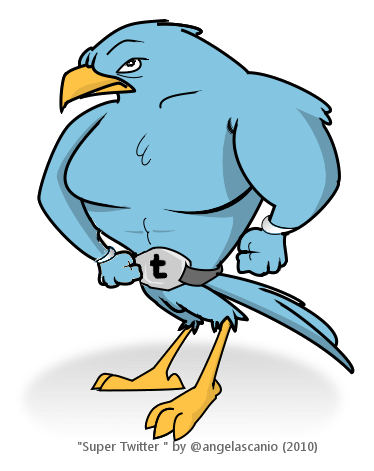
Twitter offers real value to its users. Amidst the acceleration of daily life, Twitter allows us to rapidly communicate to friends and colleagues regarding status updates, breaking news, and interesting links. The Scholarly Kitchen has one chef completely devoted to serving up side-dishes on Twitter. In terms of this audience, it’s how we keep up with views emerging from the never ending round of library conferences and industry events. And perhaps most striking, in the past five years, the reach of Twitter has come to justify its absorption into many calculations of influence and impact for scholarship. (see Elsevier’s recent announcement of its expanded use of alternative metrics) As currently engineered, Twitter is a necessary information resource for many of its users, but is that sufficient?
In the minds of some of its financial backers, Twitter needs to do better. Be more. Improve! Twitter’s business challenges are a slowing growth in the number of users being added to the platform, a minimal daily period of engagement (5 minutes for most Twitter users as opposed to Facebook users’ daily 40 minutes of engagement), and some level of turnover in management. So when the Twitter Chief Financial Officer made comments to the Wall Street Journal this month about projected changes to the platform, quite a few of the 271 million monthly active Twitter users fretted over whether the service’s value would be lost for them even as it might improve for financial stakeholders. If it ain’t broke, don’t fix it…
Let’s review what the CFO was suggesting as potential changes to the platform:
- Improved search as a means of bringing to the surface tweets surrounding a specific topic, thereby minimizing dependence on imperfectly rendered hashtags for tracking conference tweets;
- Algorithmic tweaks to the order of presentation of tweets to an individual user’s timeline, emphasizing bestowed importance by the user’s social network rather than chronological order;
- Enabling group chats by enabling direct messages (formerly a one-to-one exchange) to be sent to multiple recipients.
There had already been some concern that users were seeing tweets from accounts that they had not specifically chosen to follow, a concern that Twitter CEO Dick Costello tried to tamp down by explaining that “favorites” from unfamiliar accounts would appear in a user’s timeline if that user indicated a hunger for fresh content by twice attempting to refresh the screen. Algorithmic curation would kick in and present the user with content deemed to be of relevance and interest even if the user’s Twitter community was otherwise engaged. This is very close to what you find now under the Discovery tab in the Twitter apps on Android and iOS with material sometimes being relevant and sometimes satirical, according to what one’s social network has retweeted or favorited. Such actions can be open to interpretation, but the value of Twitter for users lies in the human curation.
There were mixed reactions from the user base to the CFO’s comments, some of them accepting and others more in the realm of — if I may use a direct quote — Bleargh.
As that academic’s reaction may suggest, this on-going experimentation intended to help Twitter solidify its future could just as easily threaten its survival. Once users have carefully crafted a feed for themselves from sources and colleagues that they know to be exactly consistent with their information requirements, the news that some algorithm could warp the result is horrifying. In the realm of scholarship, expert researchers trust in their own expertise and that of other domain experts in assessing relevance whereas they distrust an algorithm programmed by any passing developer. Platform providers, indexing services and librarians have agreed as well that transparency into the relevancy rankings of discovery tools is necessary, well aware that business considerations can introduce issues of content omission and bias. (See item 1.4, page 1, of the NFAIS Recommended Practices: Discovery Services, August 2013).
Rather than penalizing Twitter for that daily engagement period of five minutes, financial backers should be recognizing that a key value of Twitter has always been its glanceability. The meaning of a single tweet can be grasped in an instant, whether 140 text characters or an embedded image. Twitter is time efficient. I can open, scan and swipe through my Twitter timeline in half the time necessary to process a similar feed from other platforms. Although really my timeline, flowing as it does from more than 600 librarians, researchers, and information industry participants, would be hard to replicate on another platform. That’s twitter’s other value once the user has mastered the flow — minimal noise in the context of a signal-to-noise ratio. The human curated output from that feed remains witty and intelligent while avoiding the vast majority of cat memes or viral videos. Far from being a time-eating distraction, my attention remains focused on industry concerns and provides feedback on those concerns from a diversity of voices.
That’s why I sympathize with the points made by Anastasia Salter of ProfHacker and Barbara Fister at Library Journal when they make cautionary noises over what Twitter may be doing to “improve” their product. There’s a very real tension between what makes good business sense for those building an information resource and what represents the intrinsic value of that resource in the minds of users. Platform vendors and content providers don’t need to be reminded of that. Do you?
Discussion
3 Thoughts on "Tweaking Twitter"
My knowledge and use of Twitter is primitive so maybe this is already available, but a “more like this” search function would be very useful, especially during what I call “issue storms.” Is that what the “…search as a means of bringing to the surface tweets surrounding a specific topic…” is about?
David, I think the general intent is to make it easier to identify and group tweets regardless of whether any “official” hashtag exists. I *think* (although I’m not an expert in this realm) that building that into the system will better support data-mining, sentiment analysis, etc., and enhance Twitter’s value to marketers.
I agree, Jill. Hashtags are useful (and interesting) but they have the usual limitations of keywords. Twitter also has advanced Boolean word search but that too is limited. I like “more like this” search because it considers the entire message as the “search term” and looks for semantic similarities.
I had not thought of this before, but my issue storm concept might be useful as well. I did a lot of research on this a number of years ago. The idea is to map the flow of the message traffic when an issue breaks. Different cases can have very different maps and these structures can tell one a lot about the nature (and future) of the issue. The challenge was to know where and when all the messages went but Twitter has that information.


